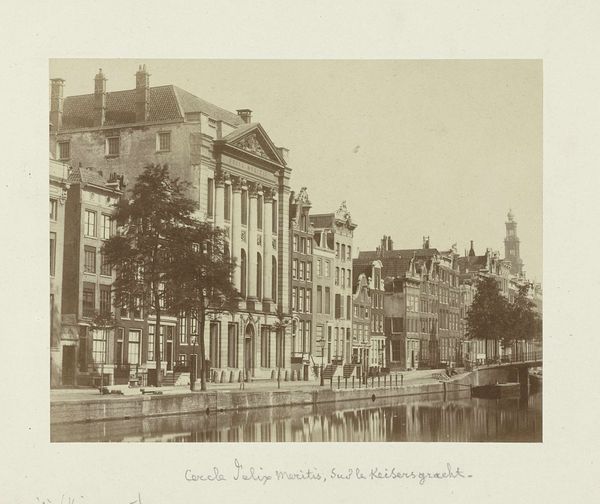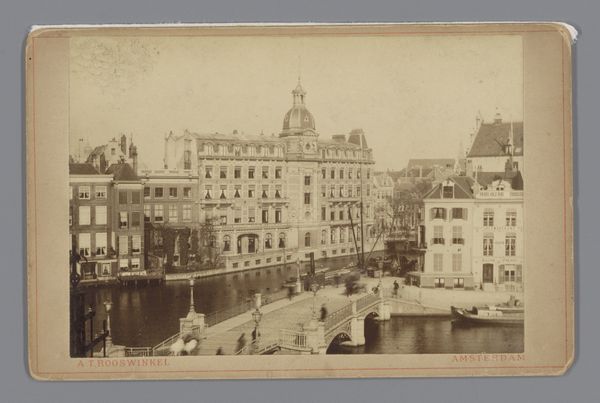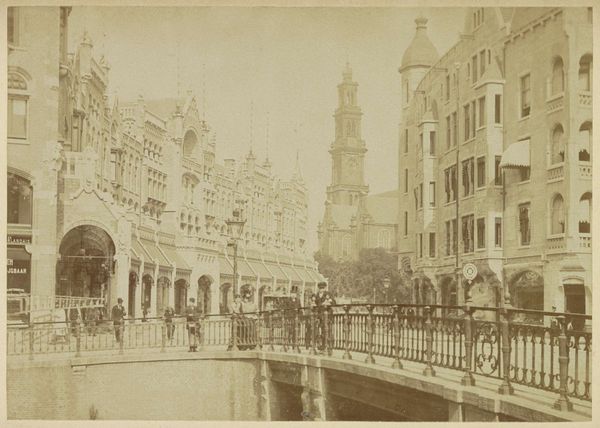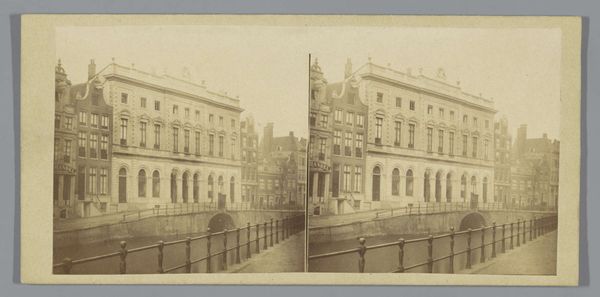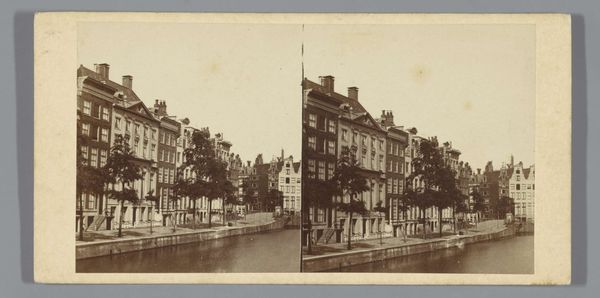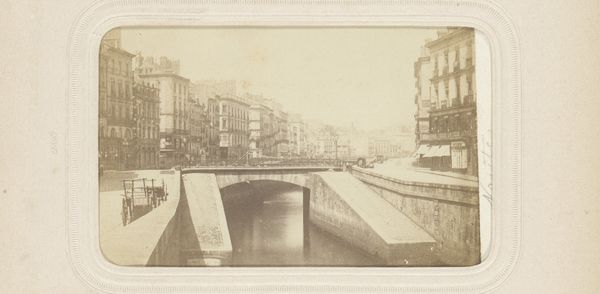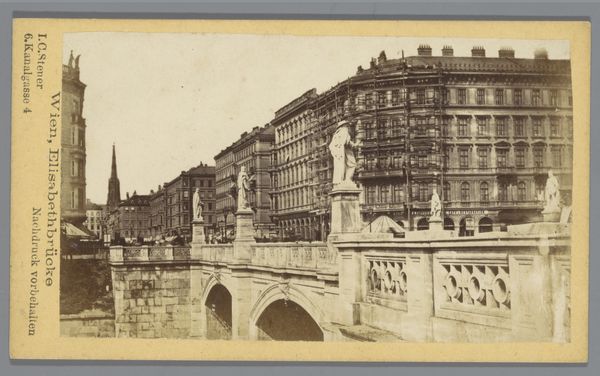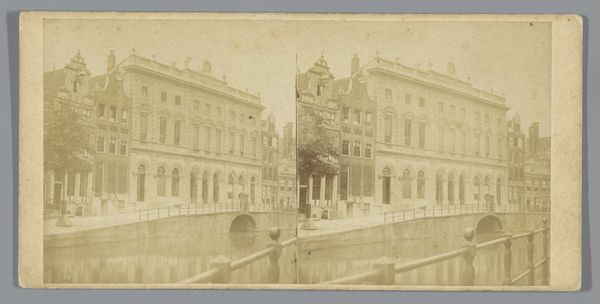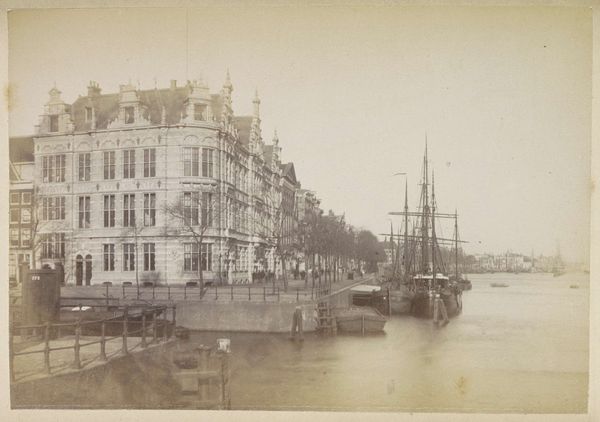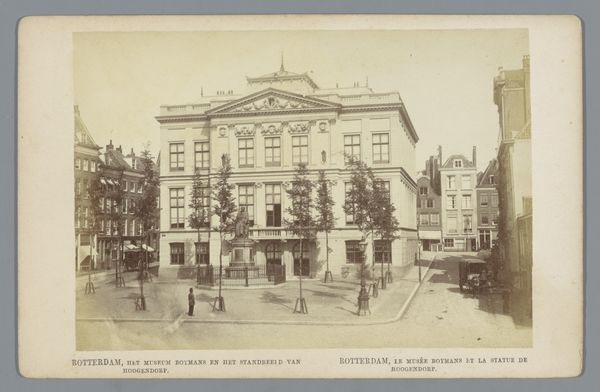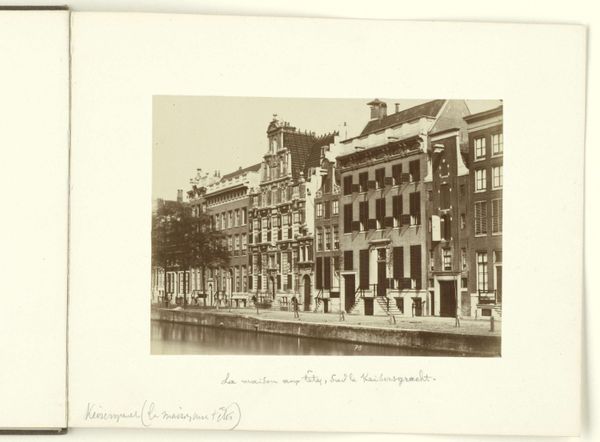
Gezicht in Utrecht: hoek Nieuwe Gracht, Trans, Pausdam en Achter den Dom 1891
0:00
0:00
photography
#
landscape
#
photography
#
19th century
#
cityscape
Dimensions: height 80 mm, width 112 mm, height 93 mm, width 114 mm
Copyright: Rijks Museum: Open Domain
Editor: Here we have Henry Pauw van Wieldrecht's photograph, "Gezicht in Utrecht," created in 1891. It portrays a street corner in Utrecht. I find the scene so incredibly still, despite being a busy urban setting. What social context do you see reflected in this piece? Curator: That stillness is deceiving. Photography in 1891 wasn't as simple as pointing and shooting. Think about the socio-economic factors at play here. Only certain people had access to photography, so what stories were being told, and whose were being left out? This image documents urban development and, perhaps inadvertently, asserts a specific class's control over the visual narrative of Utrecht. Notice how the buildings appear well-maintained. Who benefited from that visual presentation? Editor: That's fascinating! I hadn't considered who had the power to shape the visual narrative. So, the very act of documenting a clean, orderly street is, in itself, a statement? Curator: Precisely! Consider the figure on the bridge, possibly a worker, as an example. How is that person framed against the backdrop of affluent architecture? Does the image celebrate everyday life, or does it subtly reinforce existing social hierarchies? Also, where might we place this image in the evolution of photography’s relationship to painting? Editor: It feels less painterly and more documentary somehow. Curator: That’s perceptive. It marks a shift in purpose for the medium and how the urban landscape comes to be understood as photographable, and therefore legible and knowable. This photographer presents a reality framed within the context of the time. Thinking about these dynamics really makes you rethink a simple city view. Editor: I will never look at a landscape photo the same way again! Thank you! Curator: It is my pleasure, this interplay is key in understanding how these visual and cultural artifacts were made, and whose stories they prioritize.
Comments
No comments
Be the first to comment and join the conversation on the ultimate creative platform.
